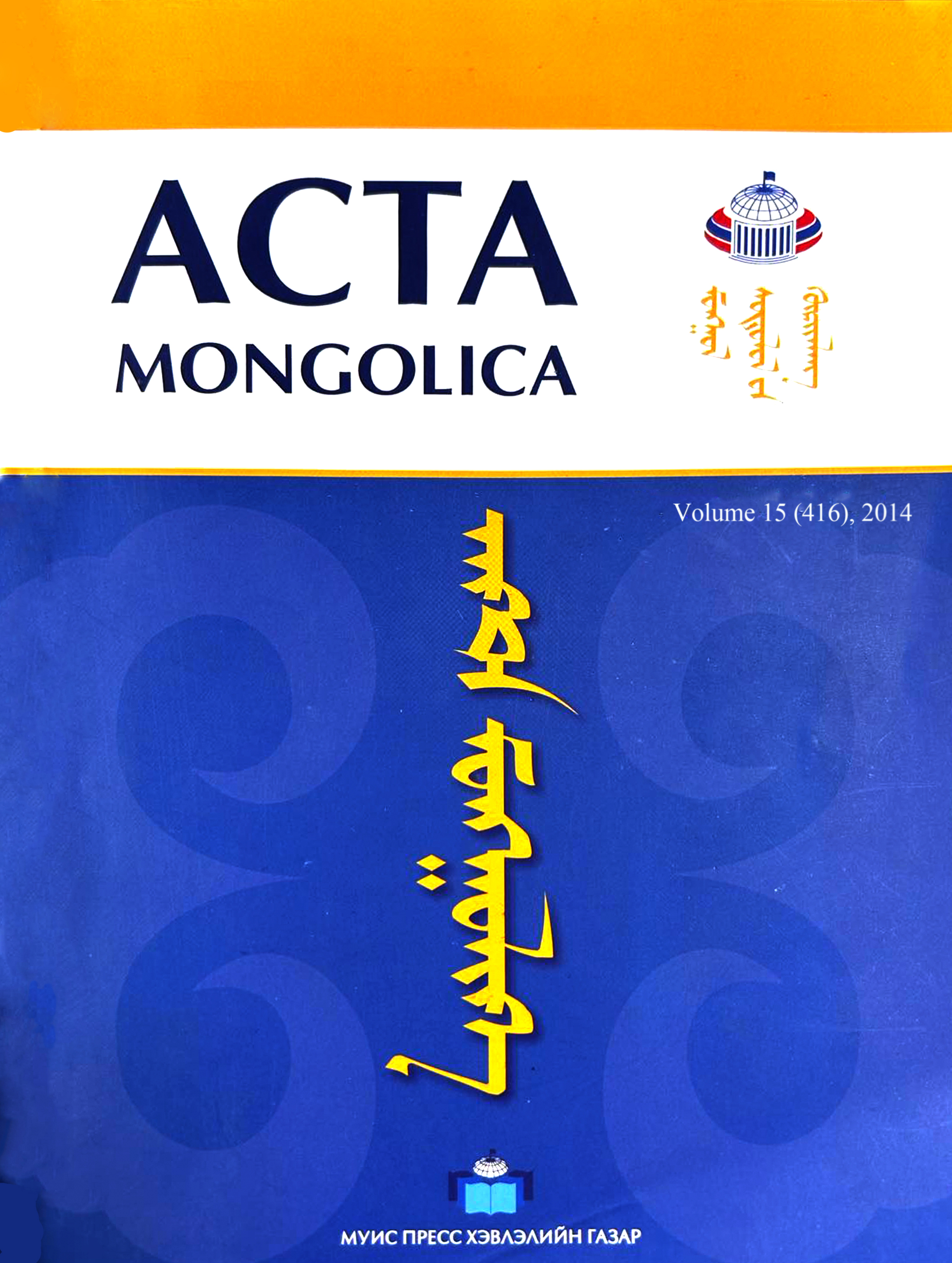The Pecheneg Settlement along Hungary’s Northwestern Frontier
Main Article Content
Abstract
The intention of this paper is to describe one way of medieval contacts between Hungary and the Orient, namely how the Turkic speaking Pecheneg guards were settled in three counties, Moson, Sopron and Győr along the Western frontier of the Hungarian Kingdom. A method that compares written sources to historical geography will be used here. This method is applicable when researching the Hungarian Middle Ages, since early medieval Hungarian settlements were often named after the owner, or the tribe that settled there. Therefore, besides written documents, maps of medieval Hungary might reveal additional information about social and military organizations.
Article Details

This work is licensed under a Creative Commons Attribution-ShareAlike 4.0 International License.
References
AO = Anjoukori Okmánytár I-VIII. Documenta res Hungaricas tempore regum Andegavensium illustrantia
[Documents of the Angevin Age] Eds Nagy, Imre - Tasnádi Nagy, Gyula. Budapest 1878-1920.
ÁÚÓ = WENZEL Gusztáv, Árpád-kori Új Okmánytár. Pest, 1860-Budapest 1874. XI. 158.
Anonymus, 1977: Gesta Hungarorum. Transl. Dezső Pais, red. Gy. Györffy. 2nd ed. Budapest (Bibliotheca Historica). [Latin original, Hungarian translation]
Benkő, Loránd 2003: Beszélnek a múlt nevei. Tanulmányok az Árpád-kori tulajdonnevekről. [The names of the past speak. Studies about the personal names of the Árpádian Period]. Budapest, Akadémiai Kiadó.
B. Szabó, János 2010: A honfoglalóktól a huszárokig. [From conquering Hungarians to Hussars] Budapest, Argumentum.
CDES = Codex Diplomaticus et epistolaris Slovaciae. I-II. Ed: Richard Marsina. Bratislavae 1971-1987.
Csánki, Dezső 1897: Magyarország történeti földrajza a Hunyadiak korában III. [The historical geography of Hungary in the Hunyadi period] Budapest, Magyar Tudomnányos Akadémia.
Dénes, József 1996: Nyugat-Dunántúl a 10. században. Kísérlet a helynevek értelmezésére. [Western Transdanubia in the 10th century. Attempt at interpreting the place names]. In: Vasi Szemle L/3 (1996). 357-370.
Dénes, József 2003: Polémikus széljegyzetek egy alapműhöz (Polemic note on some basic reading). In: Vasi Szemle 47 (4) : 494–498.
Dénes, József 2007: Nyugat-Dunántúl korai várépítészetének kutatástörténete. A Castrum Bene Egyesület XIII. Vándorgyűlése. Kőszeg 2007, május (The research history of the construction of the early fortifications of Western Transdanubia. The XIIIth meeting of the Castrum Bene Assosication in Kőszeg 2007, May 12th).
DHA = Diplomata Hungariae Antiquissima accedunt epistolae et acta ad historiam Hungariae pertinentia.
Volumen I ab anno 1000 usque ad annum 1131. Edendo operi praefuit Georgius Györffy, Budapestini 1992.
Fehértói, Katalin 2004: Árpádkori személynévtár (1000-1301). [Thesaurus of proper names in the Arpadian period] Akadémai Kiadó Budapest.
Fejér, György 1829-1844: Codex diplomaticus Hungariae ecclesiasticus ac civilis. I-XI. Budae.
Ferril, Arther 1986: The Fall of the Roman Empire. The Military Explanation. Thames and Hudson.
FNESz = Kiss, Lajos 1988: Földrajzi nevek etimológiai szótára I-II. [Etymological dictionary of toponyms] Budapest, Akadémiai Kiadó.
Golden, Peter 1972: The Migration of the Oguz: Archivum Ottomanicum.
Gombocz, Zoltán 1915: Árpádkori török személyneveink [Our proper names of Turkic origin in the Arpadian period] In: Magyar Nyelvtudományi Közlemények
Budapest.Göckenjan, Hansgerd 1972: Hilfsvölker und Grenzwächter im mittelalterlichen Ungarn. Wiesbaden, Harrassowitz.
Gömöri, János 2007: A nyugati határvidék korai sáncvárairól, különös tekintettel Sopronra: A Castrum Bene
Egyesület XIII. Vándorgyűlése. Kőszeg 2007, május 12. (About the early rampart fortifications of the western frontier, especially Sopron. The XIIIth meeting of the Castrum Bene Assosication in Kőszeg 2007, May 12th).
Görffy, György 1948: Krónikáink és a magyar őstörténet. [Our chronicles and the early history of Hungarians] Budapest, pp. 115-118., 122-125.
Györffy, György 1977: István király és műve (King Stephen and His Legacy). Gondolat, Budapest.
Györffy, György 1987, 1998: Az Árpád-kori Magyarország történeti földrajza I-III, 3rd ed., IV. [Historical geography of Hungary in the Árpádian Period] Budapest, Akadémiai Kiadó.
Györffy, György 1990: Besenyők és magyarok. [Pechenegs and Hungarians] 2nd ed. In: A magyarság keleti elemei. [The Eastern elements of the Hungarian people] Budapest, Gondolat, pp. 139-191.
Haller, János 1998: Moson vármegye történelmi földrajza (1941). [Historical geography of Moson County] Mosonmagyaróvár.
Hóman, Bálint 1930: Szent Imre [Saint Emmerich] In: Magyar Szemle IX. (1930), 201-209.
HO = Hazai Okmánytár. Codex diplomaticus patrius (Ungarisches Urkundenbuch) I-V. Eds Imre Nagy, Iván Paúr, Károly Ráth, Dezső Véghely. Győr 1865-1873, VI-VIII. Eds Arnold Ipolyi, Imre Nagy, Dezső Véghely. Budapest 1876-1891.
Karácsonyi, János 1900: A magyar nemzetségek a XIV. század közepéig [The Hungarian kindreds until the middle of the 14th century]. Reprint 1995, Budapest, Nap Kiadó. Károlyi = A nagy-károlyi gróf Károlyi család oklevéltára. Codex diplomaticus comitum Károlyi de NagyKároly. (Urkundenbuch der Grafenfamilie Károly von Nagy-Károly). I-V. Ed. Kálmán Géresi. Budapest 1882-1897.
Kiss, Andrea – Paszternák, István 2000: Hol volt Urkony? Adalékok a Fertő-vidék középkori településtörténetéhez
[Where was Urkony? Data to the medieval history of the settlements in the Fertő region] In: Soproni Szemle LIV/4,

